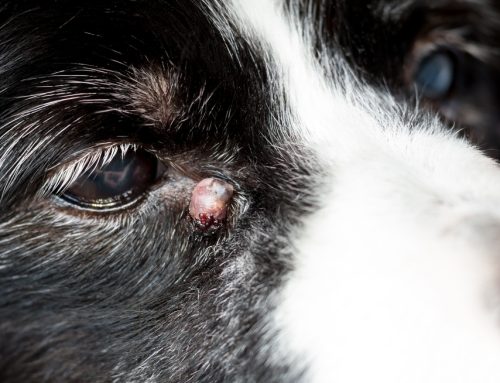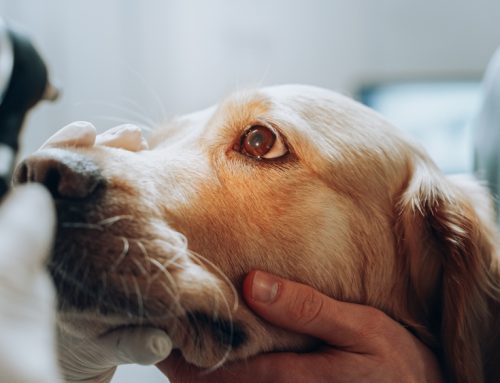Pets are amazing communicators, despite not being able to speak to their pet owners. From longing looks to the back yard, to endless staring at the cookie jar, you likely know exactly what you pet is trying to communicate, because your bond is so strong. If your pet is approaching their grey muzzle years, you may notice them slowing down, and all signs of aging are a concern. Senior pets often develop degenerative changes in their joints and internal organs. Additionally, their eyes can show aging signs, such as unusual coloration. Our Veterinary Vision Clinic team describes vitreal floaters, a common age-related change in your pet’s eyes, and the steps that should be taken to ensure they can see clearly through all life stages.
What are vitreal floaters in pets?
Similar to human eyes, your pet’s eyes contain vitreous humor, which is a clear gel-like substance that fills the space between the lens and the retina. This gel primarily functions to support and keep the retina in place against the back wall of the eye. Eye conditions, such as cataracts, can cause degeneration of the vitreous and may affect your pet’s vision. Your pet’s eyes are delicate, and susceptible to age-related changes, including lenticular sclerosis, which rarely affects their vision.
Vitreal floaters, which are similar to human eye floaters, are another common age-related problem that can spontaneously develop in pets’ eyes, resulting in opaque, round particles that pet owners see as sparkling objects. Although they can occur at any age, vitreal floaters are most commonly diagnosed in older pets. Floaters are composed of either fatty calcium deposits, which are fixed in the vitreous gel, or cholesterol particles, which appear to move in your pet’s eye, similar to a shaken snow globe. These conditions are referred to as asteroid hyalosis and synchysis, respectively. The exact cause of floaters in pets is unknown, although they can form in response to underlying medical problems, including:
- Certain eye cancers
- Eye injury or trauma
- Inflammatory conditions, including bacterial infections
- Diabetes
- Dry eye
Diagnosis and treatment of vitreal floaters in pets
Bring your pet for a veterinary examination if you notice any changes in their eyes. Your veterinarian will perform a nose-to-tail examination to look for any underlying medical problems, as well as a thorough eye exam with a specialized instrument, called an opthalmoscope, that provides a wider view inside your pet’s eye. Additional tests to rule out other underlying medical conditions may be recommended, including:
- Complete blood work and serum biochemistry blood tests — These blood tests will aid in detection of inflammation, and will check overall organ function.
- Fluorescein eye stain — This specialized eye stain is placed in your pet’s eye to check for ulcerations or corneal damage.
- Schirmer tear test — A small piece of paper is placed in the corner of your pet’s eye, to measure tear production over a set time and determine whether tear production is adequate.
- Eye ultrasound — Similar to abdominal ultrasound, a specialized probe is used to closely examine the internal eye structure, shape, and function.
Pets who are diagnosed with vitreal floaters rarely require treatment, since their vision will not be affected. Certain breeds who are diagnosed with the synchysis form of floaters, including bichon frisés and Boston terriers, have an increased risk for retinal detachment, and may require more aggressive treatment, such as surgery, to remove the vitreous.
Prognosis and prevention of vitreal floaters in pets

Pets who are diagnosed with vitreal floaters, but have no underlying medical problems, have a good prognosis and rarely will have problems with their vision. In most cases, vitreal floaters are an incidental finding, especially in older pets. Vitreal floaters are not preventable in healthy pets, but yearly, or more frequent, examinations with your family veterinarian are critical, to aid in early detection of any underlying medical problems that may affect your pet’s eyes.
Call our Veterinary Vision Center office if you have any questions about your pet’s eyes, or if you suspect they have vitreal floaters.







I found your article very helpful, thank you so much for your content. David, autor blog https://espiar-gratis.com/